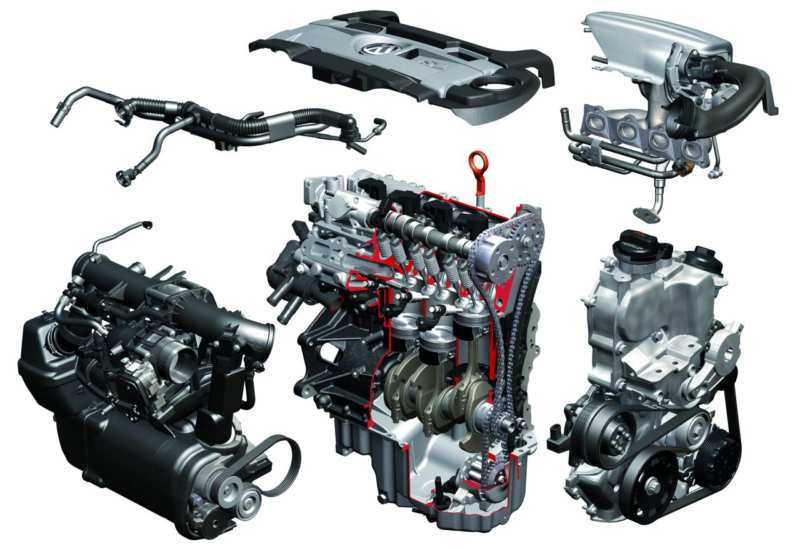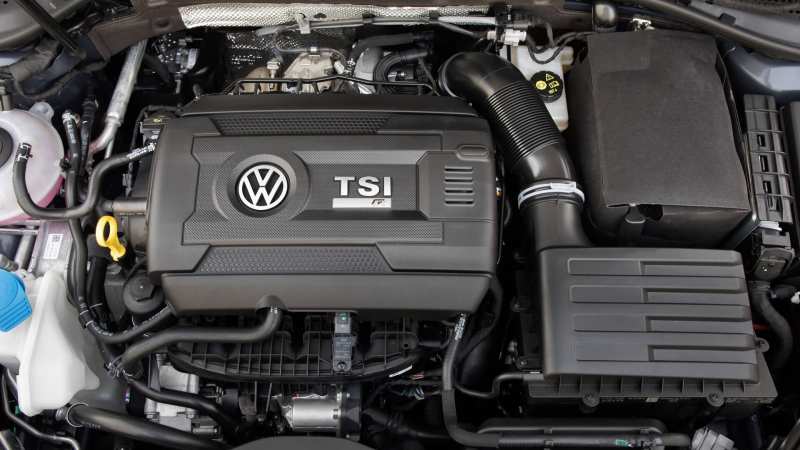TSI engine – what is it, buy or not?

TSI stands for “turbo-layer injection” literally. What is the peculiarity of the TSI engine, the better (or worse) it is, does it make sense to buy it? Let’s try to give a detailed answer to all these questions. In general, the popularity of TSI engines is explained by the fact that the choice of units in the market, to put it mildly, is not pleasant.
For example, VAG can offer the consumer only TSI and a couple of old atmospheric engines. They are installed on various models of Audi, Skoda and Volkswagen. TSI equipment is a continuation of FSI. As in the previous generation, gasoline injection technology is used directly in the cylinder.
There it is mixed with the air. Special pistons with a spherical notch take part in the process. Thanks to the powerful fuel pump of the fuel injection pump, the injectors work perfectly in conditions of high resistance.
How has the speed range been increased?
To increase the speed range it was planned to screw the turbine to the two-liter FSI turbine. However, the engineers have done differently. They took 1.4 FSI and equipped it with a turbine with a mechanical compressor. That’s how TSI came about.
The turbine is driven by the exhaust pressure and the compressor is driven by the crankshaft belt. In fact, the compressor starts with blanks. As a result, it is possible to count on the traction on low revolutions, powerful explosion on high, well-coordinated work in a range of 1400-4500.
TSI engines have impressive power and decent fuel economy. Provides outstanding dynamics, consistently high traction in all ranges. By installing a compressor and turbine in parallel, the engine has been made flexible, forgetting many of the problems that are common to most turbo engines. TSI is also a leader in environmental friendliness – CO2 emissions are among the lowest.
What is the main problem?
You should agree that the picture above looks delicious and does not cause any complaints. Here and decent economy, and modern technologies, even power at height. Then what is the main problem with such motors? There is only one drawback – exactingness. The equipment works stably, it does not cause complaints.
But if you fill the tank with low-quality fuel, you can catch the detonation along with cracks on the piston walls. The requirement is also expressed in the change of oil – it is desirable to make it every 10 000 km. Also here is an incredibly thin chain. It is stretched out quickly, it is necessary to monitor its work from 50 thousand already.
Closer to 80,000 km may need to be replaced with a new GRM kit. The valves are constantly getting sooty because petrol does not wash the tasty valves due to direct injection. The result is regular cleaning every 50,000 km. Nozzles are removed problematically and for a long time.
To sum up, TCI has no significant drawbacks. The only thing that requires special attention is a turbocharger. It is recommended to cool it after each long arrival, and also to warm up well before a trip. Fuel of low quality, mediocre oil reduce the service life of the engine in several times.
Buying a car with or without TSI?
If it’s a new car, buy it safely. You will get a good return and a great space for further tuning. Used car should be taken with caution. You will have to check not only the turbine, but also the compressor. 12 pressure points are not an indicator, because even with the partitions cut off, the cylinder can give out such values.
Ask the previous owner how often the refueling and service were performed, whether the hydraulic fracturing machine has changed, what fuel was used. Of course, the seller can lie to you, but no one is immune from this.

